Enhancing the Seismic Performance of Adjacent Building Structures Based on TVMD and NSAD
Abstract
:1. Introduction
2. Vibration Control System of Adjacent Structures Based on TVMD/NSAD
3. Vibration Transfer Function of Adjacent Building Structures Based on TVMD and NSAD
3.1. Calculation of Transfer Function
- 1
3.2. Parameter Analysis
3.2.1.
3.2.2.
4. Optimization of Vibration Parameters of Adjacent Building Structures Based on Norm Theory and the Monte Carlo Mode Search Method
5. Seismic Performance Analysis
6. Conclusions
- Based on the transfer function and time-history response diagram, it is concluded that both the TVMD vibration control system and NSAD vibration control system can play a role in vibration control of adjacent building structures proposed in this paper.
- In the TVMD vibration control system, the maximum peak value appears on the “left structure” when parameter . When parameter , the transfer function image has obvious troughs. As the parameter increases, the peak value of the transfer function on the “left structure” decreases slowly, and the peak value of the transfer function on the right of the structure increases slowly.
- In the NSAD vibration control system, the peaks of the “left structure” and the “right structure” transfer functions increase abruptly when . At , the peak value of the transfer function increases continuously. At , the peak value of the transfer function decreases continuously. When parameter , the transfer function image has obvious troughs. The parameter has little influence on the structure and fails to make the transfer function curve of the structure fluctuate significantly.
- In the mid-range response results in Section 5, it can be seen that the NSAD vibration control system is compared with the TVMD vibration control system. The NSAD vibration control system has good control ability in displacement response. TVMD vibration control system has better control ability than the NSAD vibration control system in terms of acceleration response. There is little difference in the acceleration response between the two systems.
Author Contributions
Funding
Data Availability Statement
Conflicts of Interest
Appendix A
- ; ; ; ;
Appendix B
- ; ; ; ; ;
References
- Ji, X.; Kajiwara, K.; Nagae, T.; Enokida, R.; Nakashima, M. A substructure shaking table test for reproduction of earthquake responses of high-rise buildings. Soil Dyn. Earthq. Eng. 2009, 38, 1381–1399. [Google Scholar] [CrossRef]
- Kam, W.Y.; Pampanin, S. The seismic performance of RC buildings in the 22 February 2011 Christchurch earthquake. Struct. Concr. 2011, 12, 223–233. [Google Scholar] [CrossRef]
- Rayegani, A.; Nouri, G. Application of Smart Dampers for Prevention of Seismic Pounding in Isolated Structures Subjected to Near-fault Earthquakes. J. Earthq. Eng. 2022, 26, 4069–4084. [Google Scholar] [CrossRef]
- Rayegani, A.; Nouri, G. Seismic collapse probability and life cycle cost assessment of isolated structures subjected to pounding with smart hybrid isolation system using a modified fuzzy based controller. Structures 2022, 44, 30–41. [Google Scholar] [CrossRef]
- Pippi, A.; Júnior, P.B.; Avila, S.; Morais, D.; Doz, G. Dynamic Response to Different Models of Adjacent Coupled Buildings. J. Vib. Eng. Technol. 2019, 8, 247–256. [Google Scholar] [CrossRef]
- He, T.; Jiang, N. Substructure shake table test for equipment-adjacent structure-soil interaction based on the branch mode method. Struct. Des. Tall Spec. Build. 2019, 28, 1573. [Google Scholar] [CrossRef] [Green Version]
- Basili, M.; Angelis, M.D.; Pietrosanti, D. Defective two adjacent single degree of freedom systems linked by spring-dashpot-inerter for vibration control. Eng. Struct. 2019, 188, 480–492. [Google Scholar] [CrossRef]
- Chau, K.T.; Wei, X.X.; Guo, X.; Shen, C.Y. Experimental and theoretical simulations of seismic poundings between two adjacent structures. Earthq. Eng. Struct. Dyn. 2003, 32, 537–554. [Google Scholar] [CrossRef]
- Polycarpou, P.C.; Komodromos, P. Earthquake-induced poundings of a seismically isolated building with adjacent structures. Eng. Struct. 2010, 32, 1937–1951. [Google Scholar] [CrossRef]
- Ni, Y.Q.; Ko, J.M.; Ying, Z.G. Random seismic response analysis of adjacent buildings coupled with non-linear hysteretic dampers. J. Sound Vib. 2001, 246, 403–417. [Google Scholar] [CrossRef]
- Yang, Z.; Xu, Y.L.; Lu, X.L. Experimental seismic study of adjacent buildings with fluid dampers. J. Struct. Eng. 2003, 129, 197–205. [Google Scholar] [CrossRef]
- Ying, Z.G.; Ni, Y.Q.; Ko, J.M. Stochastic optimal coupling-control of adjacent building structures. Comput. Struct. 2003, 81, 2775–2787. [Google Scholar] [CrossRef]
- Bhaskararao, A.V.; Jangid, R.S. Seismic response of adjacent buildings connected with friction dampers. Bull. Earthq. Eng. 2006, 4, 43–64. [Google Scholar] [CrossRef]
- Kim, J.; Ryu, J.; Chung, L. Seismic performance of structures connected by viscoelastic dampers. Eng. Struct. 2006, 28, 183–195. [Google Scholar] [CrossRef]
- Zhu, H.P.; Ge, D.D.; Huang, X. Optimum connecting dampers to reduce the seismic responses of parallel structures. J. Sound Vib. 2011, 30, 1931–1949. [Google Scholar] [CrossRef]
- Basili, M.; De Angelis, M. Optimal passive control of adjacent structures interconnected with nonlinear hysteretic devices. J. Sound Vib. 2007, 30, 106–125. [Google Scholar] [CrossRef]
- Lu, Z.; Wang, Z.; Zhou, Y.; Lu, X. Nonlinear dissipative devices in structural vibration control: A review. J. Sound Vib. 2018, 423, 18–49. [Google Scholar] [CrossRef]
- Christenson, R.E.; Spencer, B.F., Jr.; Johnson, E.A. Semiactive connected control method for adjacent multi-degree-of-freedom buildings. J. Eng. Mech. 2007, 133, 290–298. [Google Scholar] [CrossRef]
- Palacios-Quiñonero, F.; Rubió-Massegú, J.; Rossell, J.M.; Karimi, H.R. Semiactive–passive structural vibration control strategy for adjacent structures under seismic excitation. J. Franklin Inst. 2012, 349, 3003–3026. [Google Scholar] [CrossRef]
- Spencer, B.F.; Nagarajaiah, S. State of the art of structural control. J. Struct. Eng. 2003, 129, 845–856. [Google Scholar] [CrossRef]
- Sun, F.-F.; Yang, J.-Q.; Wang, M.; Wu, T.-Y. An adaptive viscous damping wall for seismic protection: Experimental study and performance-based design. J. Build. Eng. 2021, 44, 102645. [Google Scholar] [CrossRef]
- Platus, D.L. Negative-stiffness-mechanism vibration isolation systems. Vibration control in microelectronics. SPIE Proc. 1992, 1619, 44–54. [Google Scholar]
- Mizuno, T.; Toumiya, T.; Takasaki, M. Vibration isolation system using negative stiffness. JSME Int. J. 2003, 46, 807–812. [Google Scholar] [CrossRef] [Green Version]
- Iemura, H.; Pradono, M.H. Passive and semi-active seismic response control of a cable-stayed bridge. Struct. Control Health Monit. 2002, 9, 189–204. [Google Scholar] [CrossRef]
- Iemura, H.; Pradono, M.H. Simple algorithm for semi-active seismic response control of cable-stayed bridges. Earthq. Eng. Struct. Dyn. 2005, 34, 409–423. [Google Scholar] [CrossRef]
- Li, H.; Liu, J.; Ou, J. Seismic response control of a cable-stayed bridge using negative stiffness dampers. Struct. Control Health Monit. 2011, 18, 265–288. [Google Scholar] [CrossRef]
- Li, H.; Liu, M.; Ou, J. Negative stiffness characteristics of active and semi-active control systems for stay cables. Struct. Control Health Monit. 2008, 15, 120–142. [Google Scholar] [CrossRef]
- Weber, F.; Distl, H. Semi-active damping with negative stiffness for multi-mode cable vibration mitigation: Approximate collocated control solution. Smart Mater. Struct. 2015, 24, 115015. [Google Scholar] [CrossRef]
- Gong, W.; Xiong, S. A new filter-based pseudo-negative-stiffness control for base-isolated buildings. Struct. Control Health Monit. 2017, 24, e1912. [Google Scholar] [CrossRef]
- Hogsberg, J. The role of negative stiffness in semi-active control of magneto-rheological dampers. Struct. Control Health Monit. 2011, 18, 289–304. [Google Scholar] [CrossRef]
- Weber, F.; Boston, C. Clipped viscous damping with negative stiffness for semi-active cable damping. Smart Mater. Struct. 2011, 20, 045007. [Google Scholar] [CrossRef]
- Wu, B.; Shi, P.; Ou, J. Seismic performance of structures incorporating magnetorheological dampers with pseudo-negative stiffness. Struct. Control Health Monit. 2013, 20, 405–421. [Google Scholar] [CrossRef]
- Shi, X.; Zhu, S. Magnetic negative stiffness dampers. Smart Mater. Struct. 2015, 24, 072002. [Google Scholar] [CrossRef]
- Shi, X.; Zhu, S. Simulation and optimization of magnetic negative stiffness dampers. Sens. Actuator A Phys. 2017, 259, 14–33. [Google Scholar] [CrossRef]
- Chen, L.; Sun, L.; Nagarajaiah, S. Cable with discrete negative stiffness device and viscous damper: Passive realization and general characteristics. Smart Struct. Syst. 2015, 15, 627–643. [Google Scholar] [CrossRef]
- Antoniadis, I.; Chronopoulos, D.; Spitas, V.; Koulocheris, D. Hyper-damping properties of a stiff and stable linear oscillator with a negative stiffness element. J. Sound Vib. 2015, 346, 37–52. [Google Scholar] [CrossRef]
- Kalathur, H.; Lakes, R.S. Column dampers with negative stiffness: High damping at small amplitude. Smart Mater. Struct. 2013, 22, 084013. [Google Scholar] [CrossRef]
- Dong, L.; Lakes, R. Advanced damper with high stiffness and high hysteresis damping based on negative structural stiffness. Int. J. Solids Struct. 2013, 50, 2416–2423. [Google Scholar] [CrossRef] [Green Version]
- Wang, M.; Sun, F.; Jin, H. Performance evaluation of existing isolated buildings with supplemental passive pseudo-negative stiffness devices. Eng. Struct. 2018, 177, 30–46. [Google Scholar] [CrossRef]
- Lai, Z.; Sun, T.; Nagarajaiah, S. Adjustable template stiffness device and SDOF nonlinear frequency response. Nonlinear Dyn. 2019, 96, 1559–1573. [Google Scholar] [CrossRef]
- Shen, Y.; Peng, H.; Li, X.; Yang, S. Analytically optimal parameters of dynamic vibration absorber with negative stiffness. Mech. Syst. Signal Process. 2017, 85, 193–203. [Google Scholar] [CrossRef]
- Walsh, K.K.; Boso, E.; Steinberg, E.P.; Haftman, J.T.; Littell, W.N. Variable negative stiffness device for seismic protection of building structures through apparent weakening. J. Eng. Mech. 2018, 144, 04018090. [Google Scholar] [CrossRef]
- Wang, M.; Sun, F.; Yang, J.; Nagarajaiah, S. Seismic protection of SDOF systems with a negative stiffness amplifying damper. Eng. Struct. 2019, 190, 128–141. [Google Scholar] [CrossRef]
- Mathew, G.; Jangid, R.S. Seismic response control of a building by negative stiffness devices. Asian J. Civ. Eng. 2018, 19, 849–866. [Google Scholar] [CrossRef]
- Carrella, A.; Brennan, M.J.; Waters, T.P. Demonstrator to show the effects of negative stiffness on the natural frequency of a simple oscillator. Proc. Inst. Mech. Eng. Part C J. Mech. Eng. Sci. 2008, 222, 1189–1192. [Google Scholar] [CrossRef]
- Li, H.; Li, J.; Yu, Y.; Li, Y. Modified adaptive negative stiffness device with variable negative stiffness and geometrically nonlinear damping for seismic protection of structures. Int. J. Struct. Stab. Dyn. 2021, 21, 2150107. [Google Scholar] [CrossRef]
- Iemura, H.; Igarashi, A.; Pradono, M.H.; Kalantari, A. Negative stiffness friction damping for seismically isolated structures. Struct. Control Health Monit. 2006, 13, 775–791. [Google Scholar] [CrossRef]
- Toyooka, A.; Kouchiyama, O.; Iemura, H.; IKEDA, M. Development of the passive negative stiffness friction device and its verification through shaking table. Doboku Gakkai Ronbunshuu A 2010, 66, 148–162. [Google Scholar] [CrossRef] [Green Version]
- Zhou, P.; Li, H. Modeling and control performance of a negative stiffness damper for suppressing stay cable vibrations. Struct. Control Health Monit. 2016, 23, 764–782. [Google Scholar] [CrossRef]
- Wang, H.; Gao, H.; Li, J.; Wang, Z.; Ni, Y.; Liang, R. Optimum design and performance evaluation of the tuned inerter-negative-stiffness damper for seismic protection of single-degree-of-freedom structures. Int. J. Mech. Sci. 2021, 212, 106805. [Google Scholar] [CrossRef]
- Wang, M.; Sun, F.-F.; Nagarajaiah, S. simplified optimal design of MDOF structures with negative stiffness amplifying dampers based on effective damping. Struct. Des. 2019, 28, e1664. [Google Scholar] [CrossRef]
- Pasala, D.T.R.; Sarlis, A.A.; Reinhorn, A.M.; Nagarajaiah, S.; Constantinou, M.C.; Taylor, D. Simulated bilinear-elastic behavior in a SDOF elastic structure using negative stiffness device: Experimental and analytical study. J. Struct. Eng. 2014, 140, 04013049. [Google Scholar] [CrossRef]
- Pasala, D.T.R.; Sarlis, A.A.; Reinhorn, A.M.; Nagarajaiah, S.; Constantinou, M.C.; Taylor, D. Apparent weakening in SDOF yielding structures using a negative stiffness device: Experimental and analytical study. J. Struct. Eng. 2015, 141, 04014130. [Google Scholar] [CrossRef]
- Zhao, Z.; Chen, Q.; Hu, X.; Zhang, R. Enhanced energy dissipation benefit of negative stiffness amplifying dampers. Int. J. Mech. Sci. 2023, 240, 107934. [Google Scholar] [CrossRef]
- Kang, X.; Li, S.; Hu, J. Design and parameter optimization of the reduction-isolation control system for building structures based on negative stiffness. Buildings 2023, 13, 489. [Google Scholar] [CrossRef]
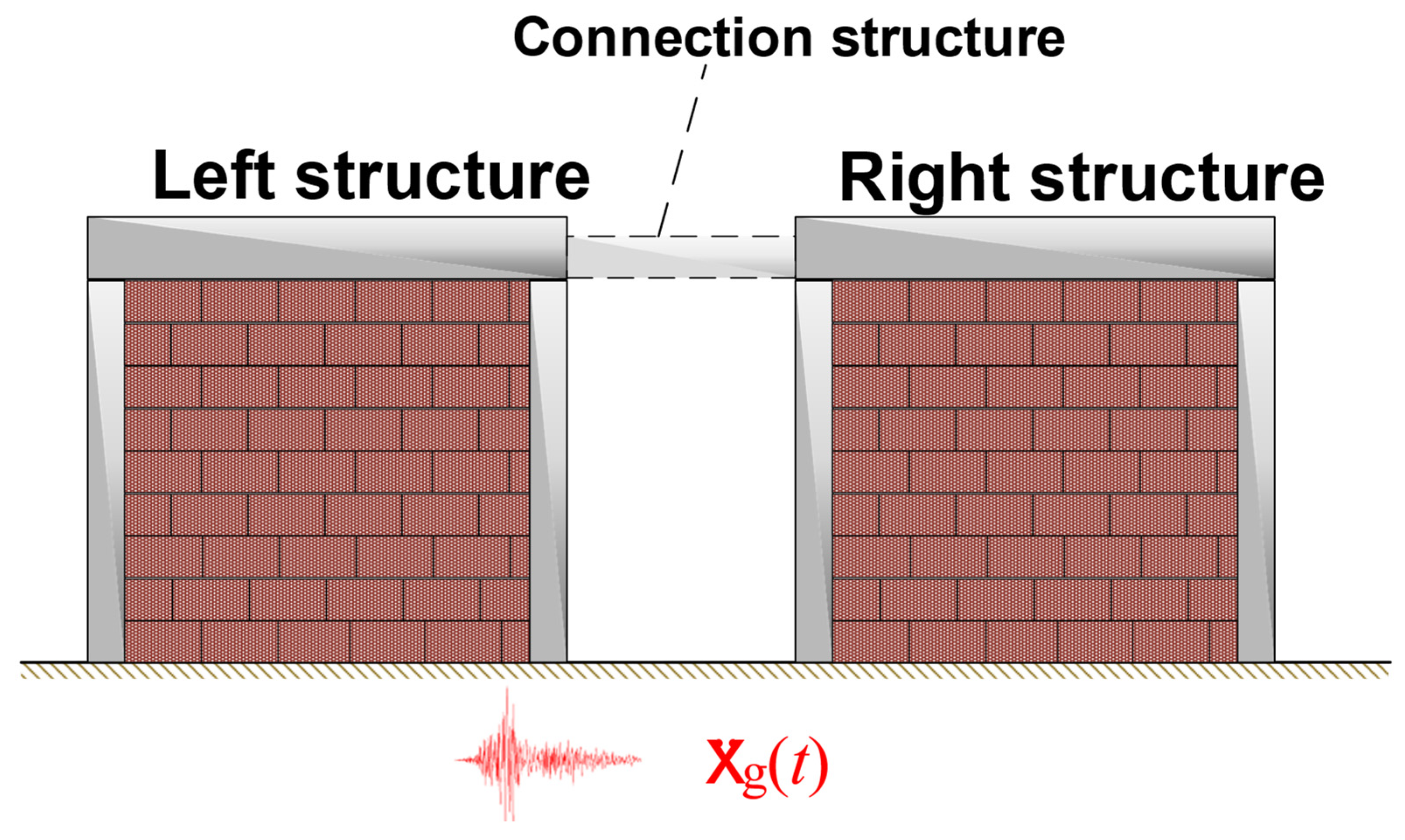

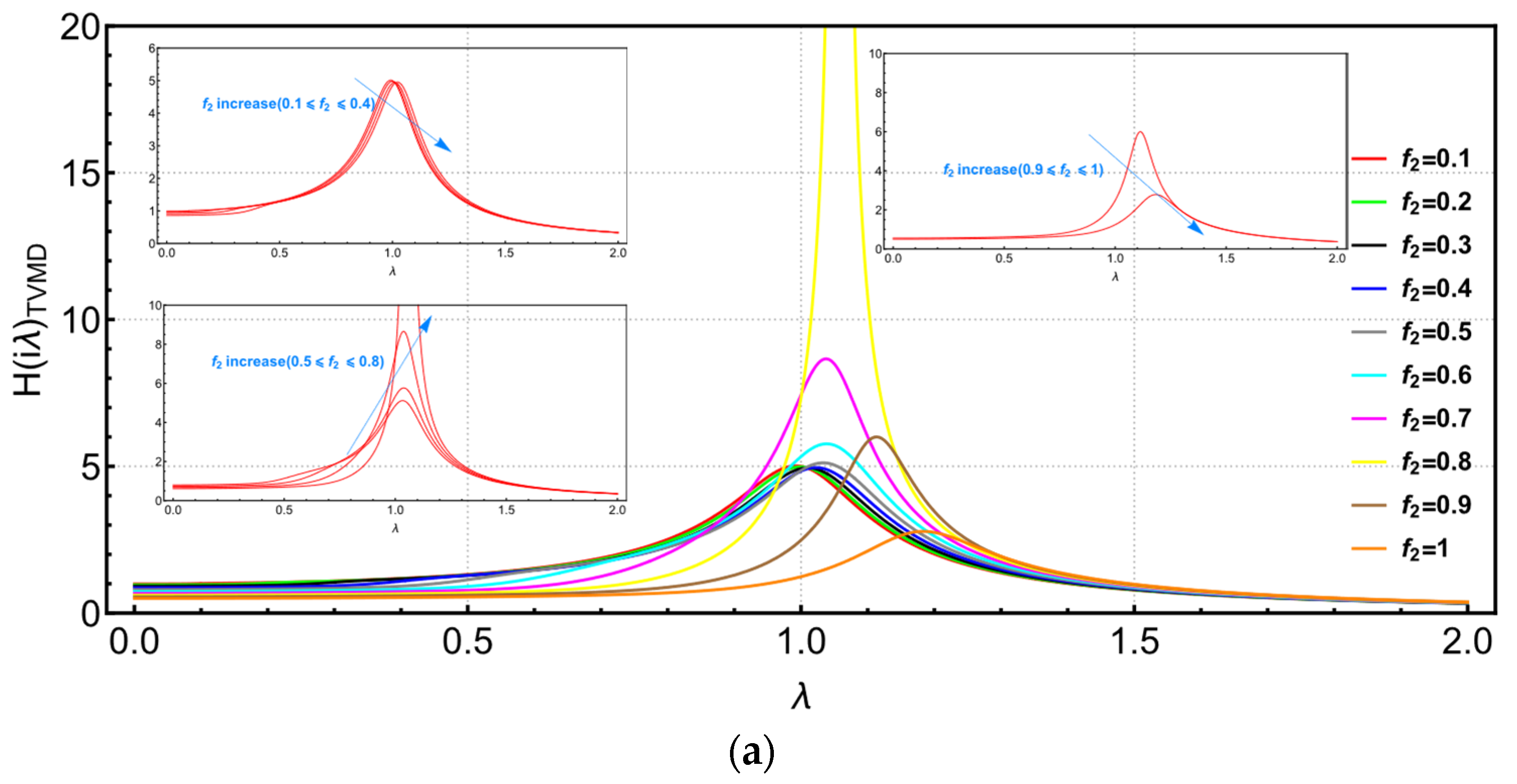
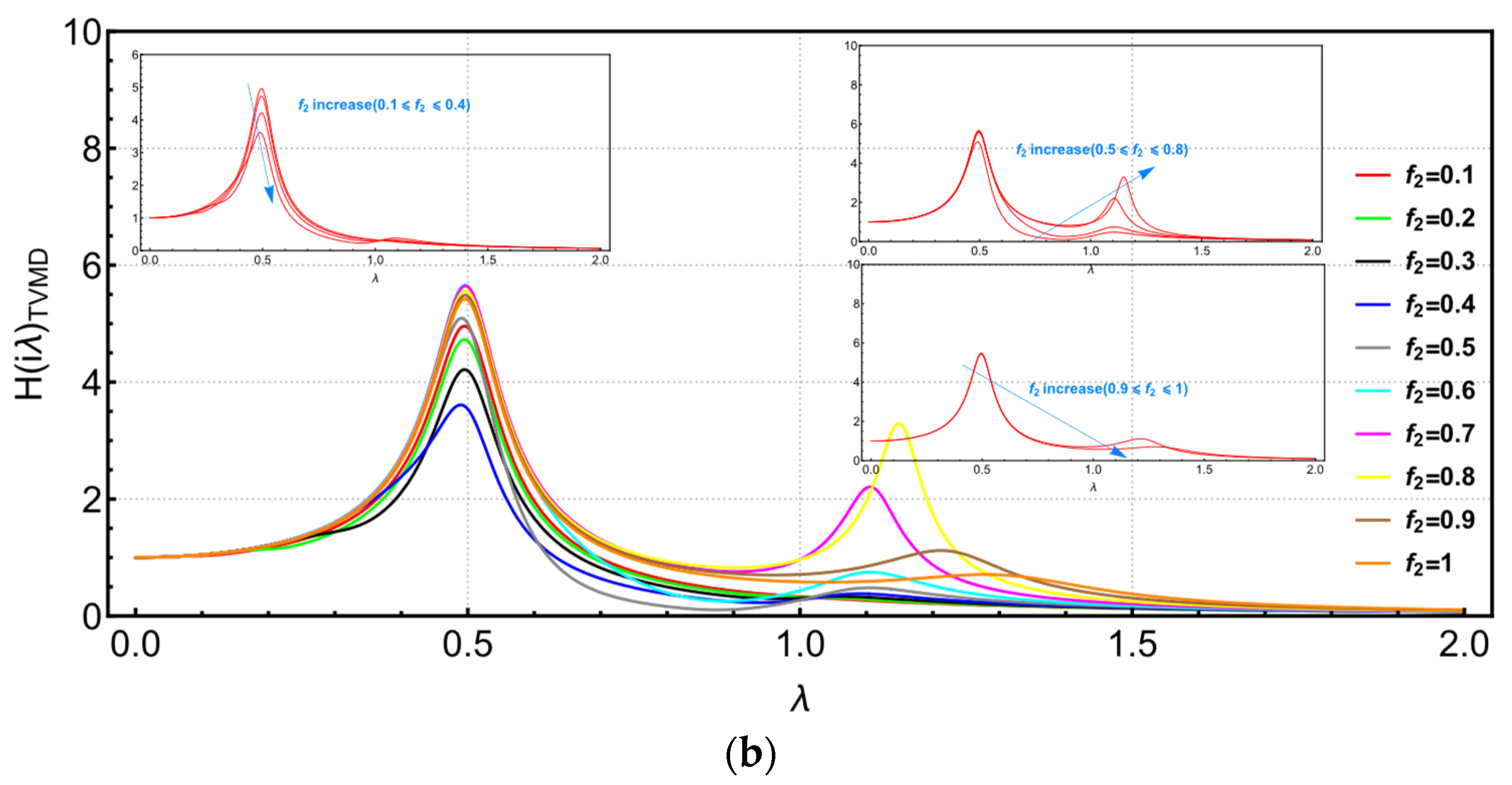





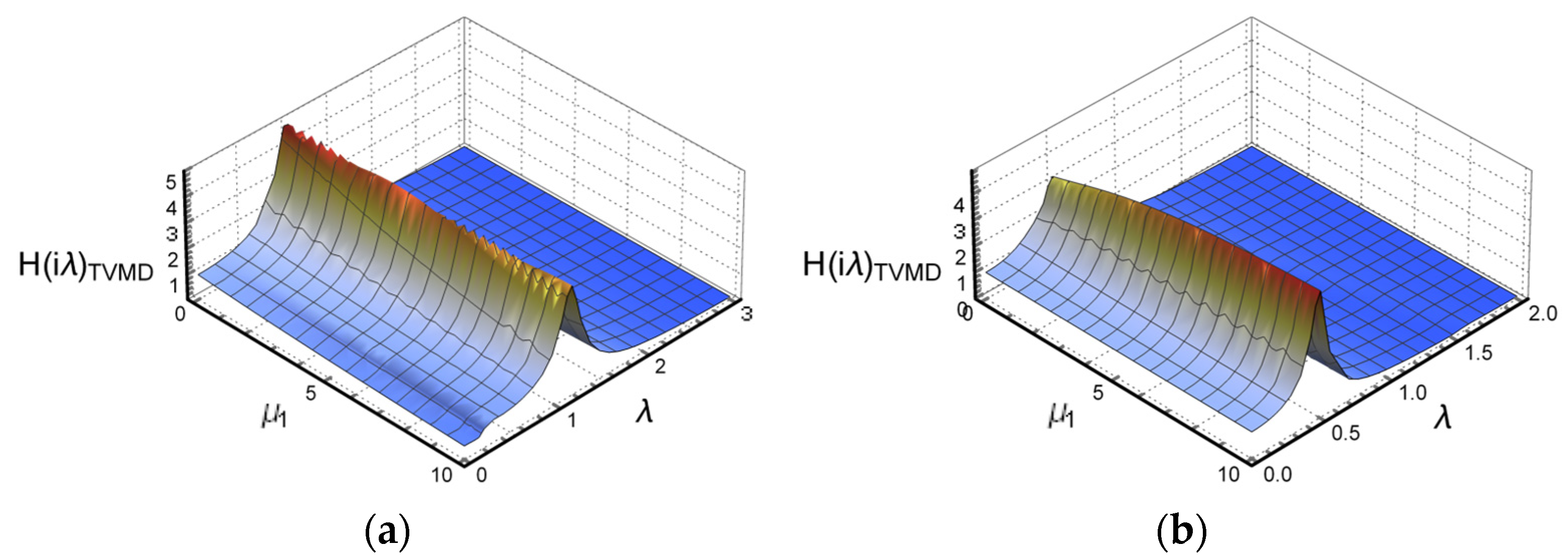
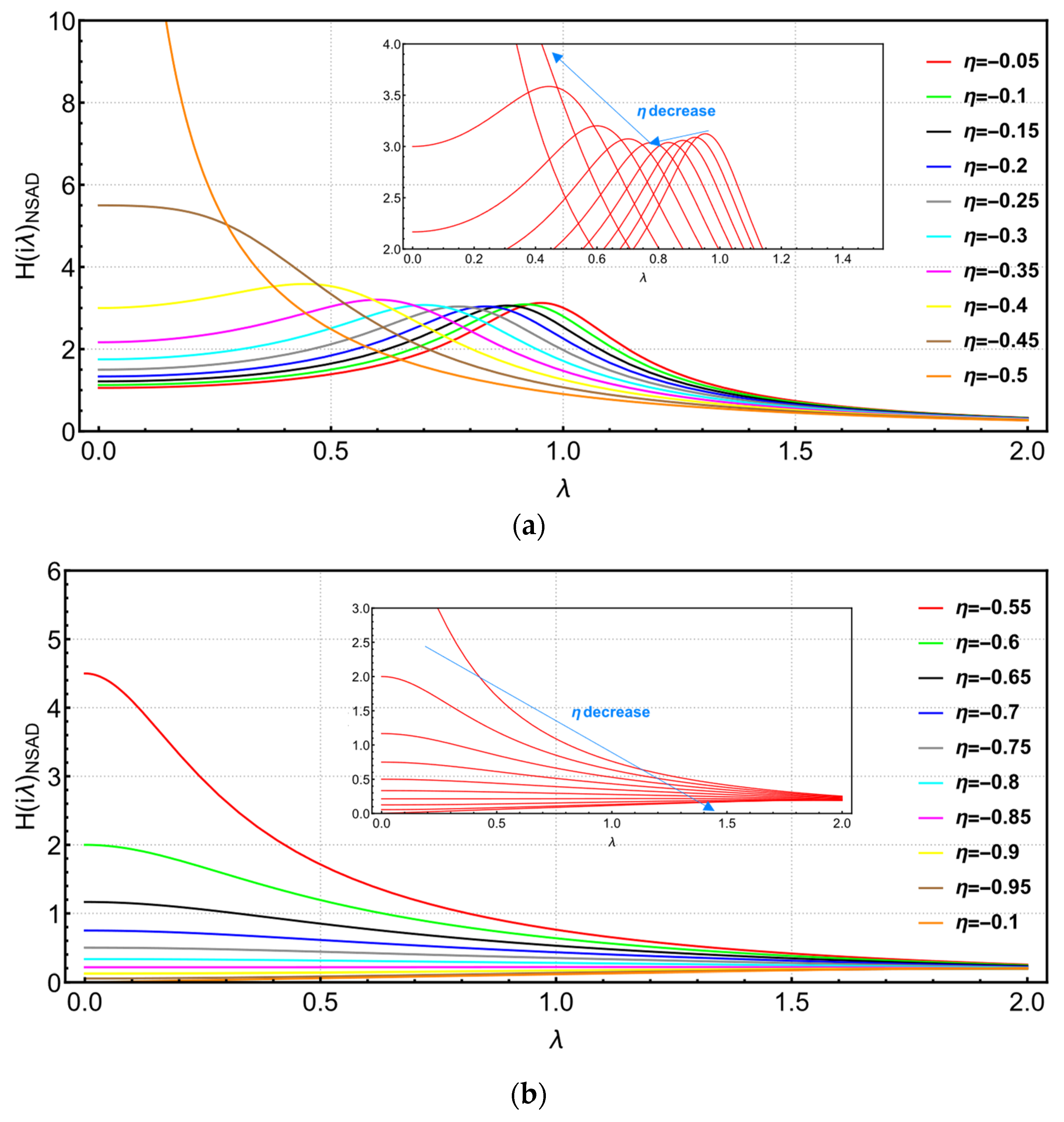



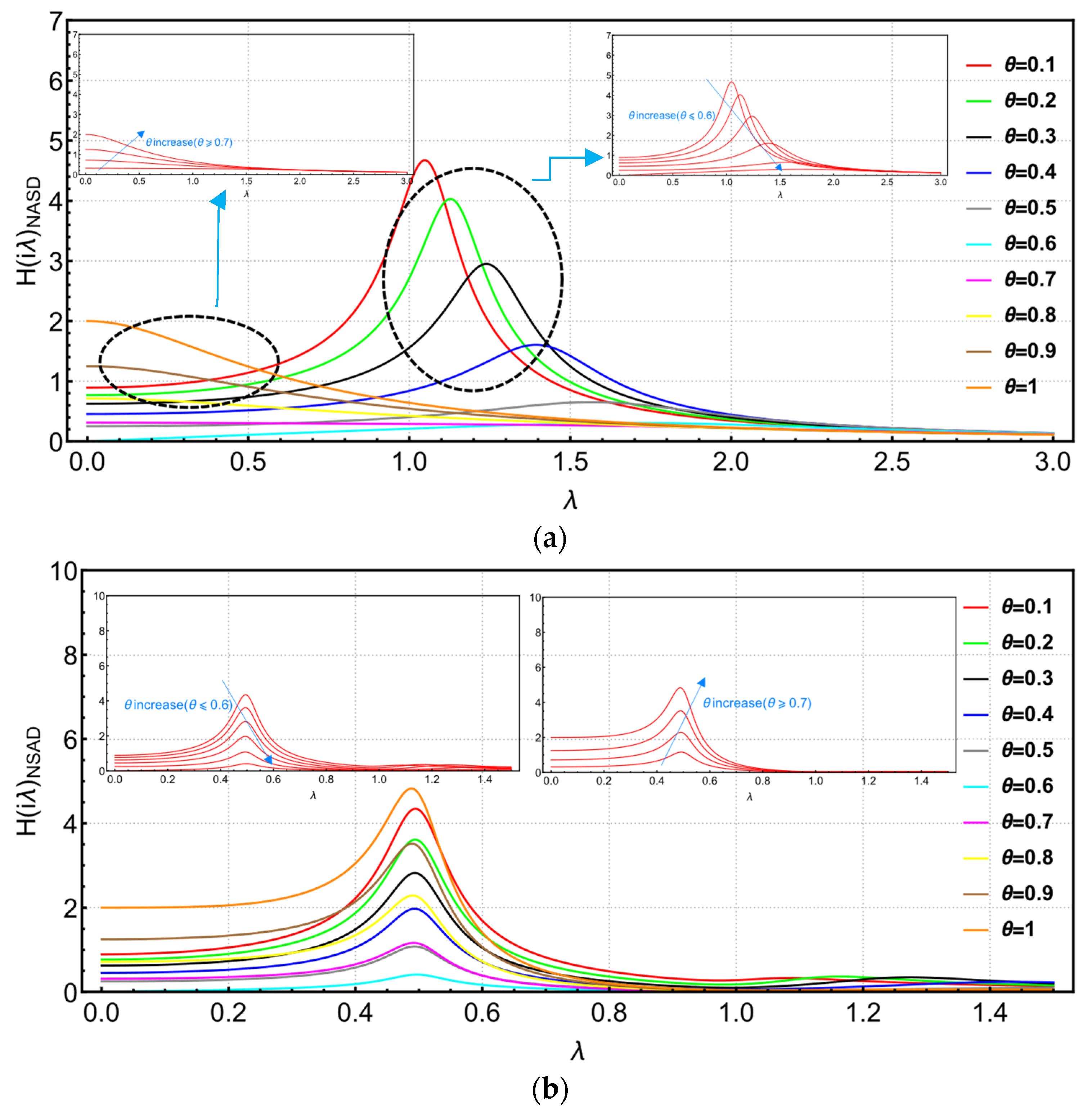


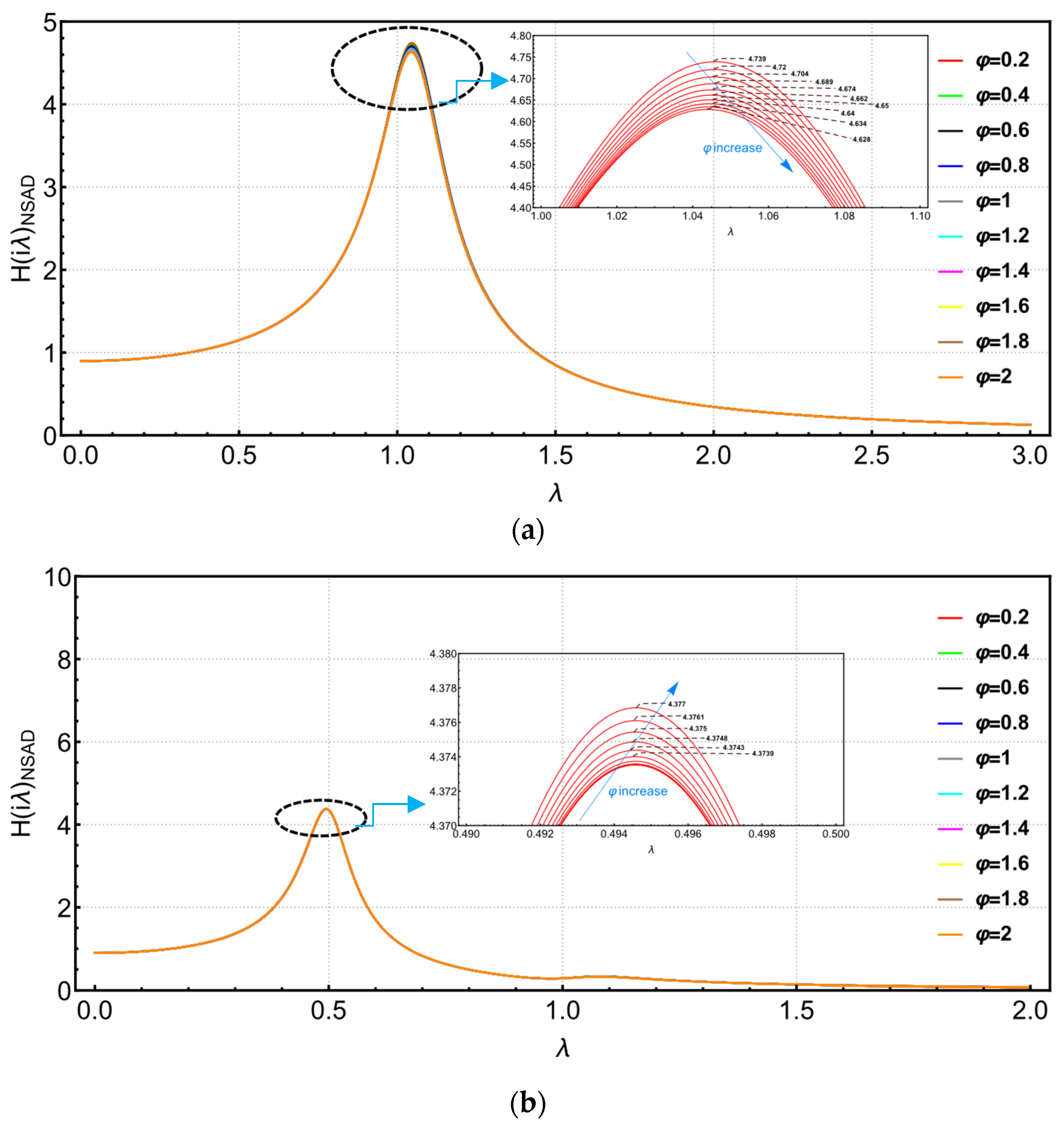
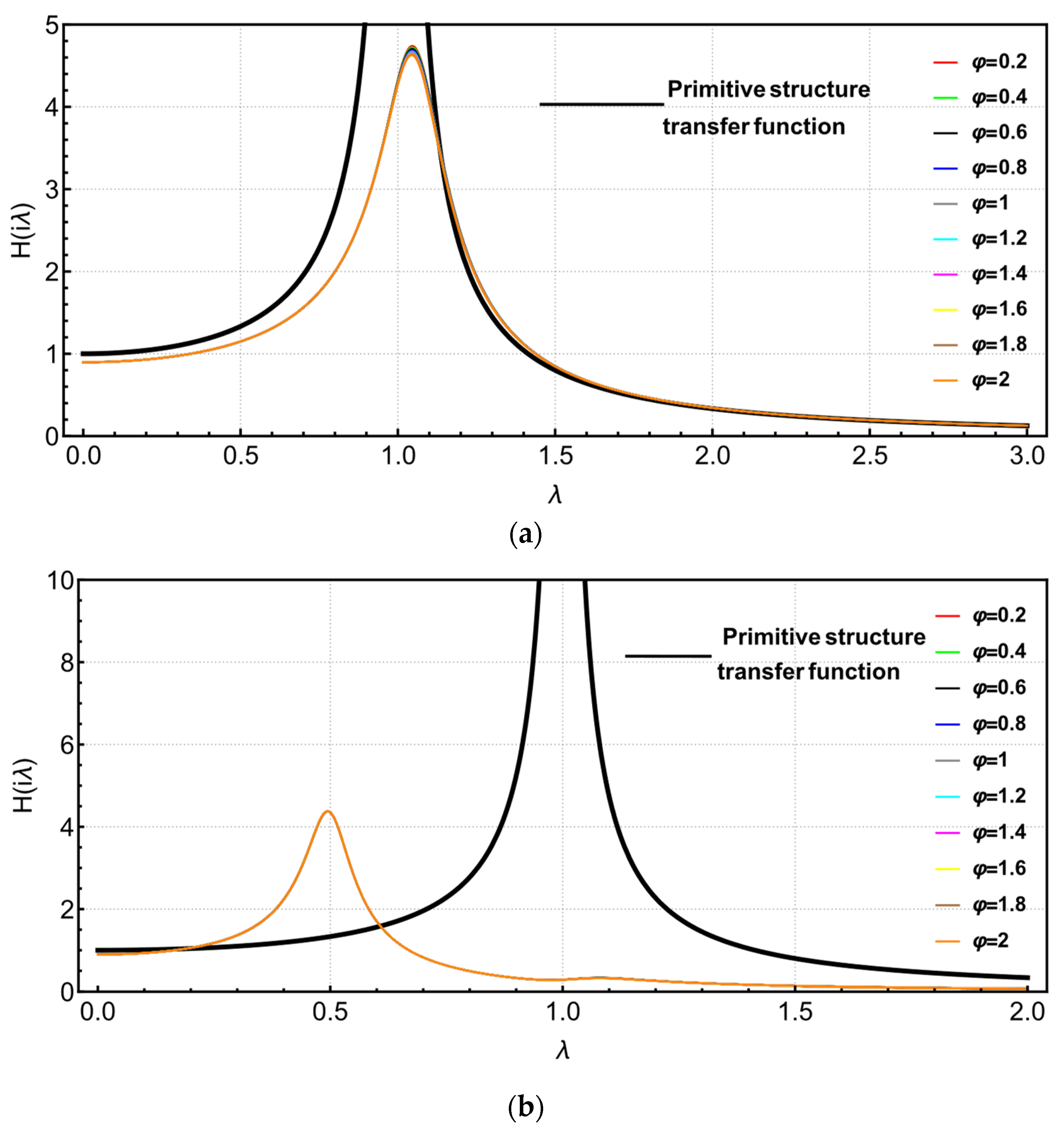


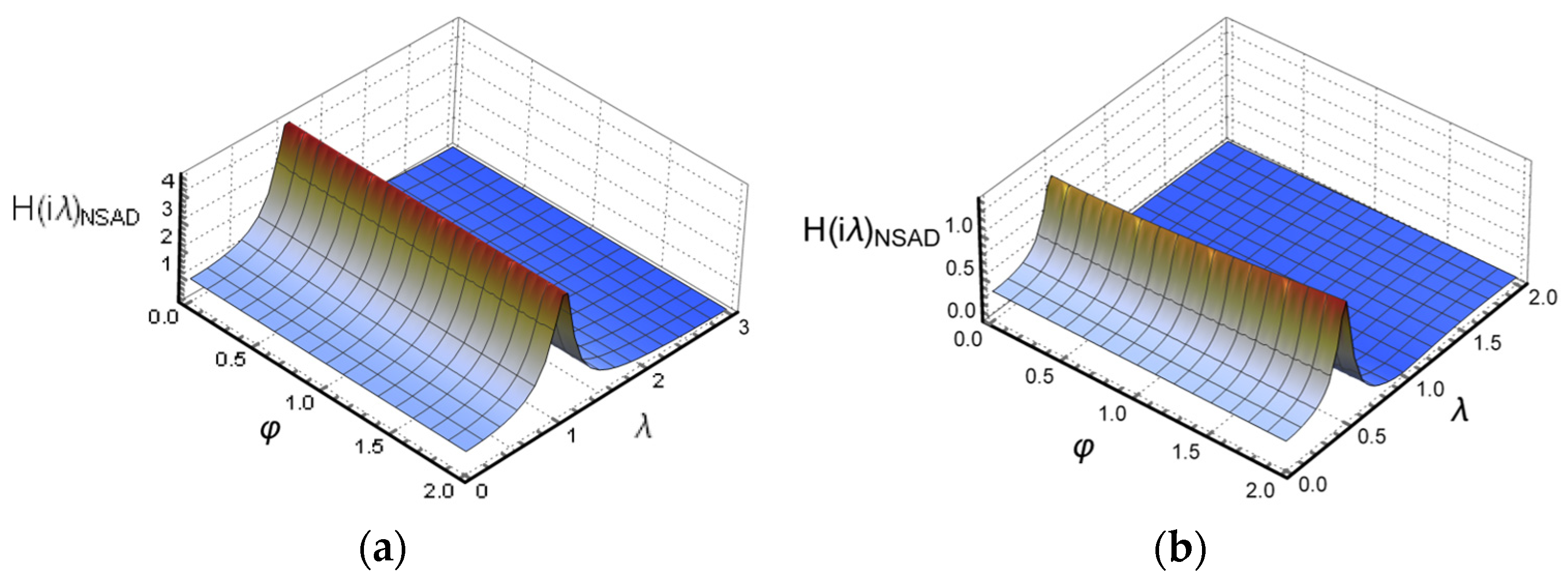




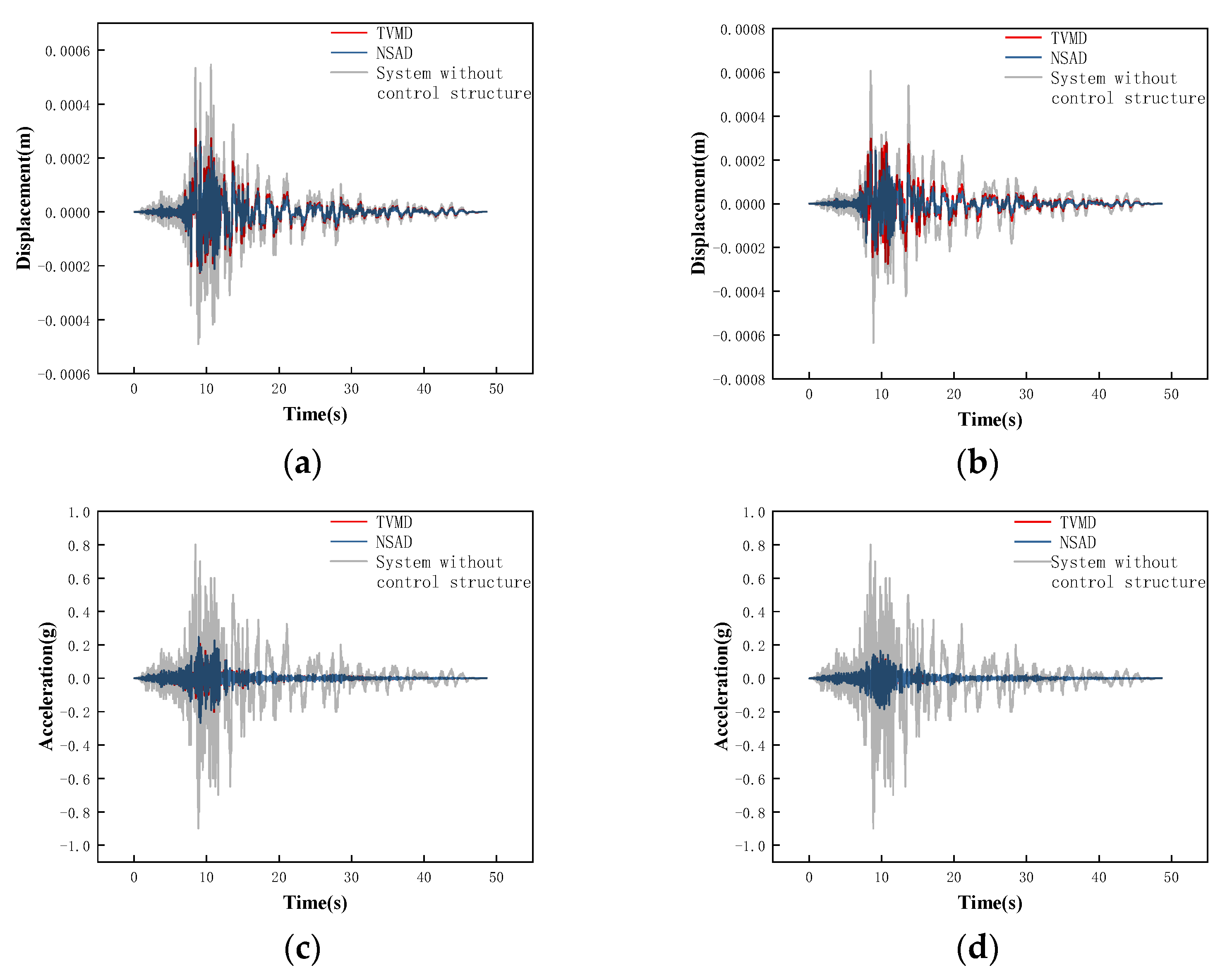

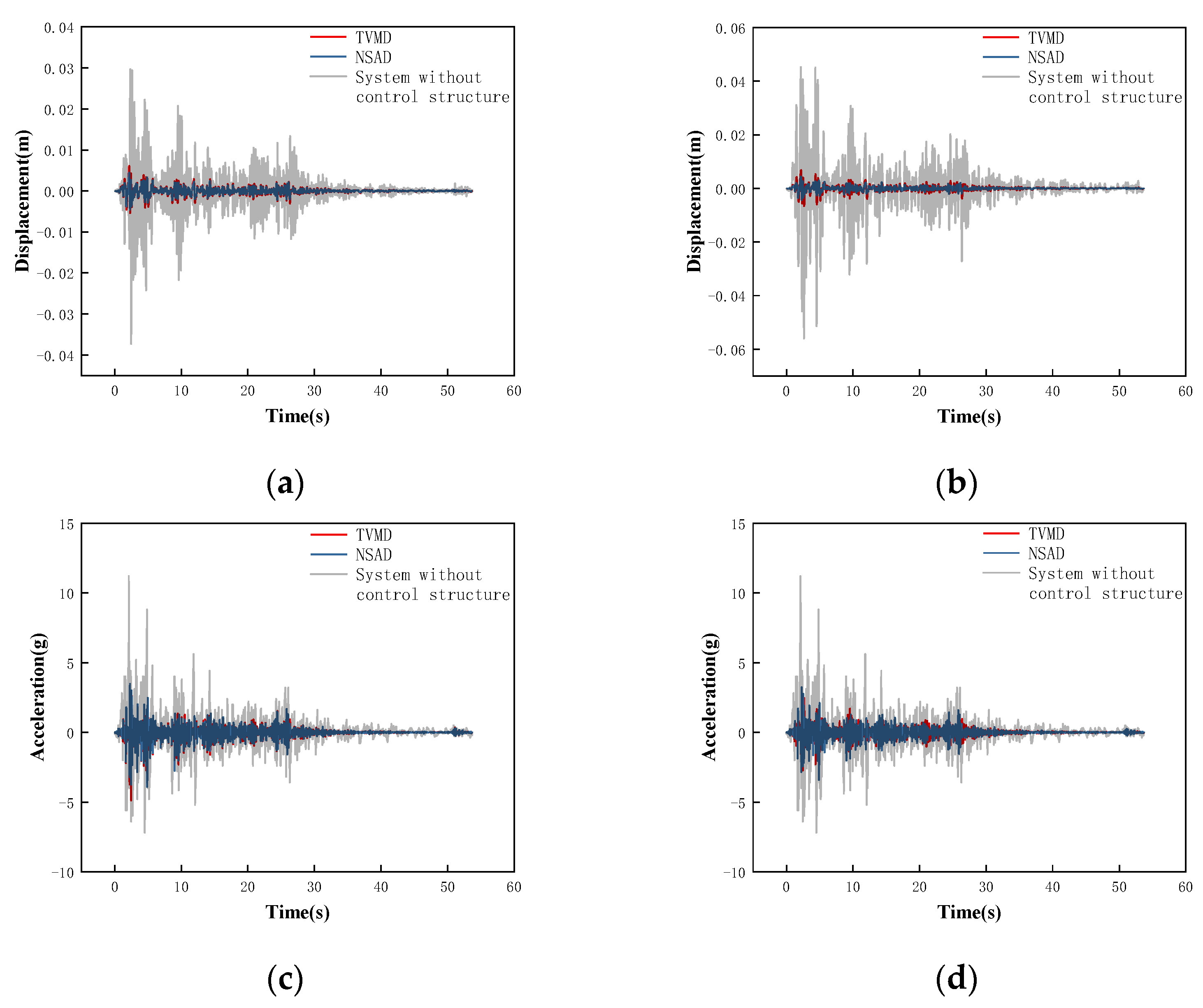
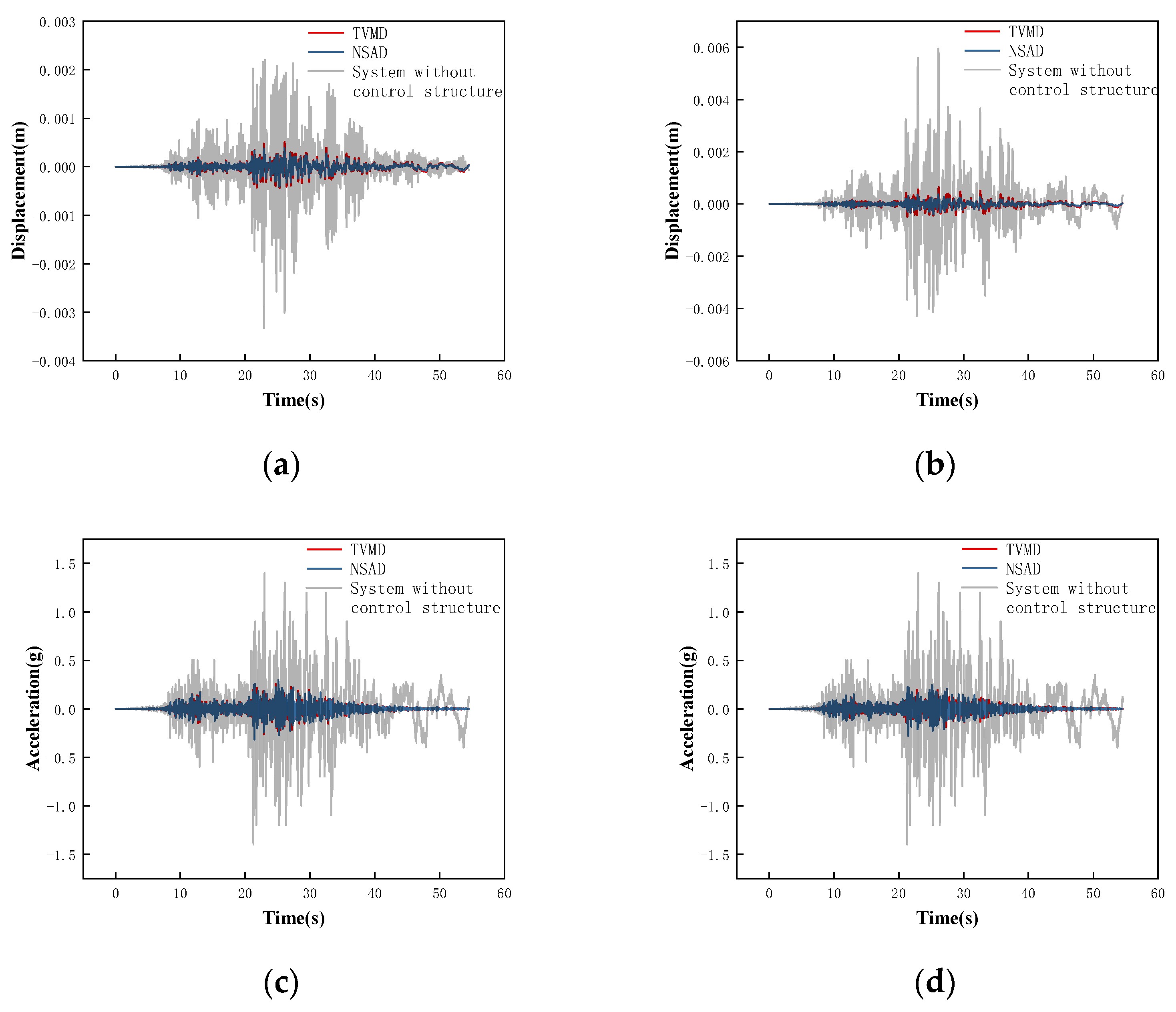



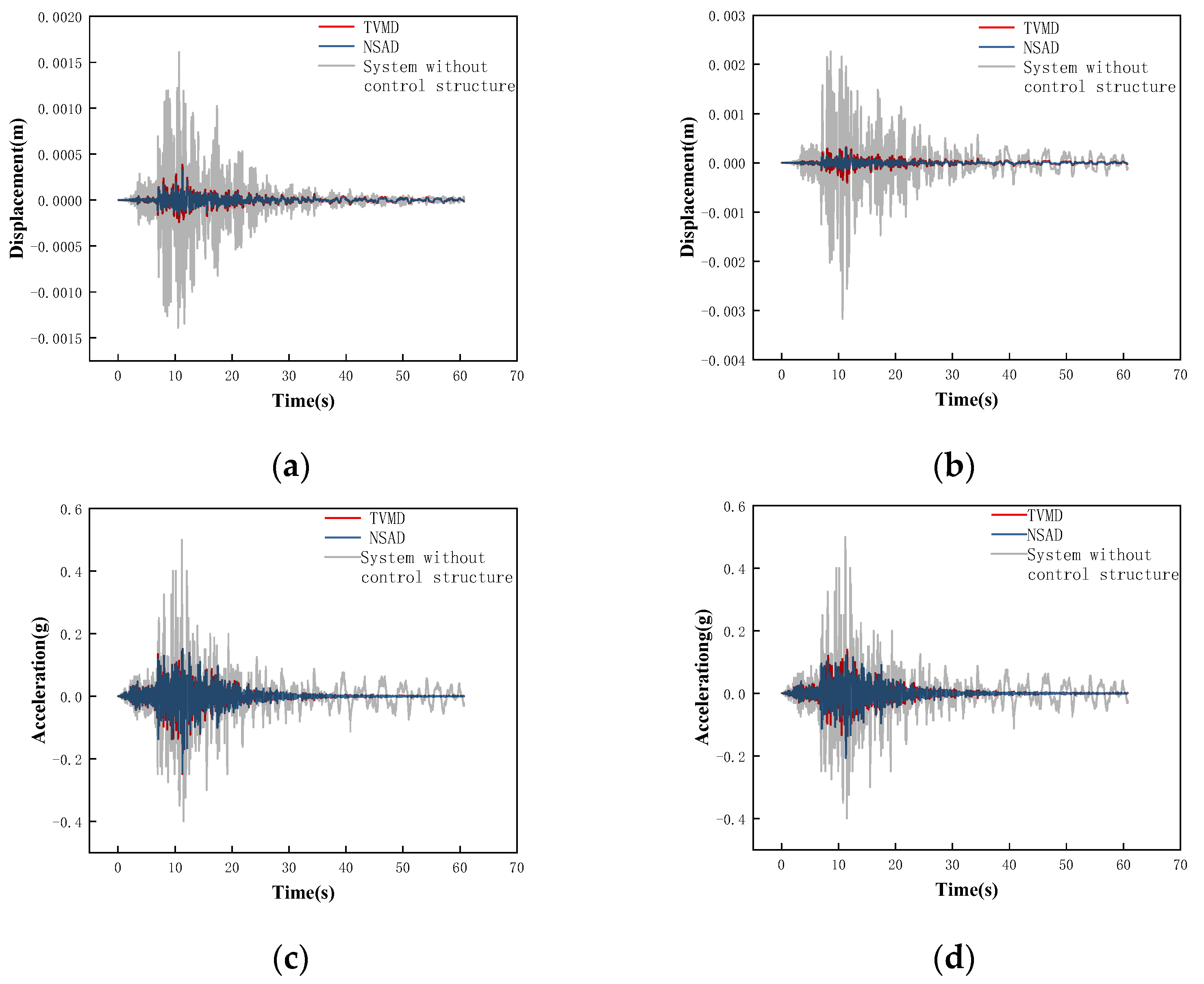

| Left Structure | Right Structure | ||||
|---|---|---|---|---|---|
| (kg) | (Ns/m) | (N/m) | (kg) | (Ns/m) | (N/m) |
| TVMD | NSAD | ||||
|---|---|---|---|---|---|
| (kg) | (Ns/m) | (N/m) | (Ns/m) | (N/m) | (N/m) |
| Number | Earthquake Name | Design Seismic Grouping | Venue Category | Station | Maximum Acceleration (g) | Year |
|---|---|---|---|---|---|---|
| 1 | Chi-Chi | 1 | I | CHY010 | 0.18 | 1999 |
| 2 | Chuetsu-Oki | 1 | II | JOETSU OGATAKU | 0.19 | 2007 |
| 3 | Darfield New Zealand | 1 | III | CANTERBURY AERO | 0.189 | 2010 |
| 4 | EL Centro | 1 | IV | 270 Deg | 0.36 | 1940 |
| 5 | EL Mayor-Cucapsh | 2 | III | CAKEXICO FIRE STATION | 0.277 | 2010 |
| 6 | Imperial Valley | 2 | IV | CERRO PRIETO | 0.172 | 1979 |
| 7 | Irpinia Italy | 3 | I | BISACCTA | 0.097 | 1980 |
| 8 | Iwate | 3 | II | AKT019 | 0.181 | 2008 |
| 9 | Kobe Japan | 3 | III | ABENO | 0.225 | 1995 |
| 10 | San Fernando | 3 | IV | SANTA FELITA DAN | 0.156 | 1971 |
Disclaimer/Publisher’s Note: The statements, opinions and data contained in all publications are solely those of the individual author(s) and contributor(s) and not of MDPI and/or the editor(s). MDPI and/or the editor(s) disclaim responsibility for any injury to people or property resulting from any ideas, methods, instructions or products referred to in the content. |
© 2023 by the authors. Licensee MDPI, Basel, Switzerland. This article is an open access article distributed under the terms and conditions of the Creative Commons Attribution (CC BY) license (https://creativecommons.org/licenses/by/4.0/).
Share and Cite
Kang, X.; Li, S.; Yan, C.; Jiang, X.; Hou, H.; Fan, Z.; Mao, D.; Huang, Q. Enhancing the Seismic Performance of Adjacent Building Structures Based on TVMD and NSAD. Buildings 2023, 13, 2049. https://doi.org/10.3390/buildings13082049
Kang X, Li S, Yan C, Jiang X, Hou H, Fan Z, Mao D, Huang Q. Enhancing the Seismic Performance of Adjacent Building Structures Based on TVMD and NSAD. Buildings. 2023; 13(8):2049. https://doi.org/10.3390/buildings13082049
Chicago/Turabian StyleKang, Xiaofang, Shuai Li, Chao Yan, Xueqin Jiang, Hanyao Hou, Zhipeng Fan, Dun Mao, and Qiwen Huang. 2023. "Enhancing the Seismic Performance of Adjacent Building Structures Based on TVMD and NSAD" Buildings 13, no. 8: 2049. https://doi.org/10.3390/buildings13082049
APA StyleKang, X., Li, S., Yan, C., Jiang, X., Hou, H., Fan, Z., Mao, D., & Huang, Q. (2023). Enhancing the Seismic Performance of Adjacent Building Structures Based on TVMD and NSAD. Buildings, 13(8), 2049. https://doi.org/10.3390/buildings13082049







